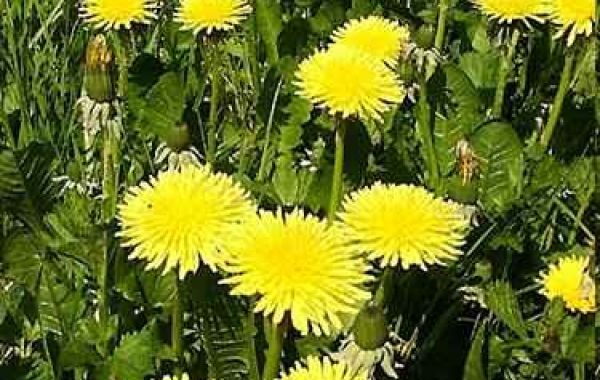What some have thought to be nothing more than a worthless weed turns out to be one of the most beneficial plants for humankind. Dandelions perform several functions and have dozens of commercial uses including food, drink, and medicine. Modern science has analyzed dandelion greens. They are a good source of calcium, potassium, vitamin A, and vitamin C. They have twice as much vitamin A in a one-cup serving of whole milk and that is more than most vitamin pills. They also have as much calcium as a children’s vitamin or half a glass of milk and that’s more than most other vegetables. The entire plant is edible, the roots, stem, flower, and leaves. It's a blood cleanser, liver cleanser, helps dissolve kidney stones. It is beneficial for bowel function, helps anemia, lowers cholesterol, beneficial for cancer prevention, improves gastrointestinal health, reduces gas, indigestion, can prevent and treat diabetes, helps manage insulin, stimulates bile secretion, aids digestion and is mildly diuretic and laxative. The milky white sap can be placed on warts, moles, and pimples to help eat them off. The stems can actually be used as drinking straws. The stems, buds, and leaves are great in stir-fry, steamed, sautéed, eaten raw in salads or in smoothies. A great source of the antioxidants vitamin A and E, which prevent free radical damage. Other vitamins and minerals include; B complex, C, D, calcium, iron, manganese, magnesium, phosphorus, potassium, phosphorus, sulfur, silicon, sodium, saponins, and phytoestrogens. Dandelion has been used for chronic skin complaints like eczema, and acne. It is also an outstanding herbal medicine for gout. It strengthens kidneys, along with being a strong diuretic without depleting potassium. The roots are a good food source for probiotics (beneficial gut bacteria). It is rich in minerals and trace minerals for bone, cartilage, tendon, and ligament formation and removes acids from the blood. Flowers are sweetest when picked young and have a sweet, honey-like flavor. Mature flowers are bitter but still edible. Dandelion buds (young, unopened flowers) are tastier than the flowers: best to pick these when they are very close to the ground. Young leaves taste good raw in a salad or steamed. Dandelion seeds are antibiotic but bitter to taste, making it great for the liver. The plant has been used for hundreds of years to make coffee, tea, wine, beer, smoothies, and soda.
Up to 1957, more than 100,000 pounds of dandelion roots were imported annually to the United States for pharmaceutical use. In Spring, the dandelion contains mannitol, which is used as a base for pills, a treatment for hypertension and coronary insufficiency
In some States, Dandelions are a farmed crop that is sold under the Belle of Maine label as canned Dandelion greens. Other commercial uses include dog treats, dog food, lip gloss, shampoo, latex substitute, rubber, car tires, percussion caps, radio condensers.
Gardeners and farmers should love this plant for numerous reasons. First; It attracts predator insects like ladybugs and lacewings which kill off the bad bugs. It is also one of the first foods the honey and mason bees feed from. According to the book WEEDS: GUARDIANS OF THE SOIL by Joseph A. Cocannouer, there is no such thing as a weed. One of the jobs of “weeds”, which Dandelions excel at, is to feed other plants. 50% of the solar energy absorbed by Dandelions is put into the soil to feed the web of life under our feet. They are also indicators of soil health. The roots go down deep to break up hard compacted soil and once their job is done they will simply go away and leave “compost corridors” so that water and nutrients can make their way deeper into the soil. Healthy, mineral-rich, non-toxic soil will germinate very few if any dandelions because there is no need for them. Soils with chemicals or other toxins will be loaded with Dandelions performing what is called phytoremediation. Phytoremediation is the direct use of living green plants for in situ, or in place, removal, degradation, or containment of contaminants in soils, sludges, sediments, surface water, and groundwater. Dandelions have been shown to remove toxins within the family of heavy metals/aromatics(e.g.benzene, toluene, xylene) amongst others. So the next time you hear someone complain about Dandelions in their lawn, help them understand that they are there for a good purpose.







